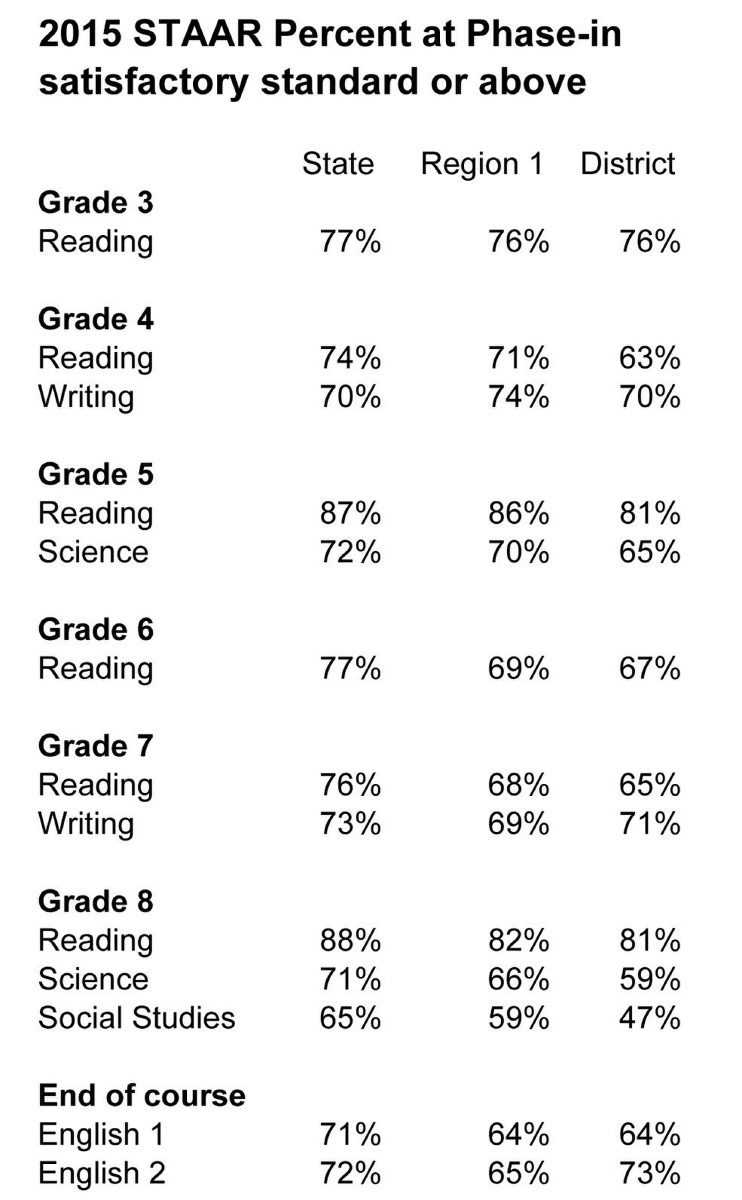SAN BENITO — The school district has met the standard.
That means, according to the Texas Education Agency’s Texas Academic Performance Report, the district has passed, performing within the standards set by the state.
Over the last two years, the San Benito school district has met the standard defined by TEA’s accountability ratings.
Tuesday night, the community heard a first-hand account and general breakdown of the report.
But what does that mean?
The report, formerly known as the Academic Excellence Indicator System report published annually by the TEA, contains information on student performance at the campus and district level.
The report also contains campus performance objectives, student demographics, finances, staffing, and program expenditures.
TEA requires the report to be presented to the community through a public hearing within 90 days of it publishing.
Director of Assessment, Research, and Evaluation, Gina Ortiz presented the report to the board and the public Tuesday night.
The San Benito School District scored above the targeted numbers in all four indexes.
“This is the highest rating a school district can achieve,” Ortiz said.
In index one, student achievement, the district scored a 71.
The target score is 60.
In index two, student progress, the district scored a 31.
The target score is 20.
In index three, closing performance gaps, the district scored a 38.
The target score is 28.
In index four, post secondary readiness, the district scored a 73.
The target score is 57.
Despite, the great reviews from the state, there are several areas that requires district follow up.
The STAAR performance for grades three through 12 in Social Studies failed to meet the standard, with the district scoring 65 percent, 7 percent lower than the region and 13 percent lower than the state average.
The district also lacked in the area of college-ready graduates.
According to the TAPR, the district only had 58 percent of its graduates who were college ready in reading and English, 10 percent less than the state average.
Enrollment in higher education has gone down over the years, sparking another area of concern for the district officials.
The report stated 51 percent of it graduates are enrolled at a higher education institution for the year. It’s a significant drop from previous years.
However, Ortiz said those numbers did not count the students who attend school out of state.
Total revenue for the year 2013-2014 school year reached more than $114 million, with about 79 percent going to payroll, about 19 percent going to operating expenses, 0.49 percent going to debt and 0.67 percent going to capitol outlay.
There was no financial data available for the 2014-2015 school year. Ortiz said some of the state data indicators are a year behind.
The report also provides information on teachers and the amount of experience they have, Ortiz said.
According to the 2014-2015 report, about 10 percent of the district teachers are new to teaching, while 26 percent have between 1 and 5 years of experience, 21 percent have between 6 and 10 years of experience, 22 percent have about 11 and 20 years of experience and 20 percent have more than 20 years of experience.




